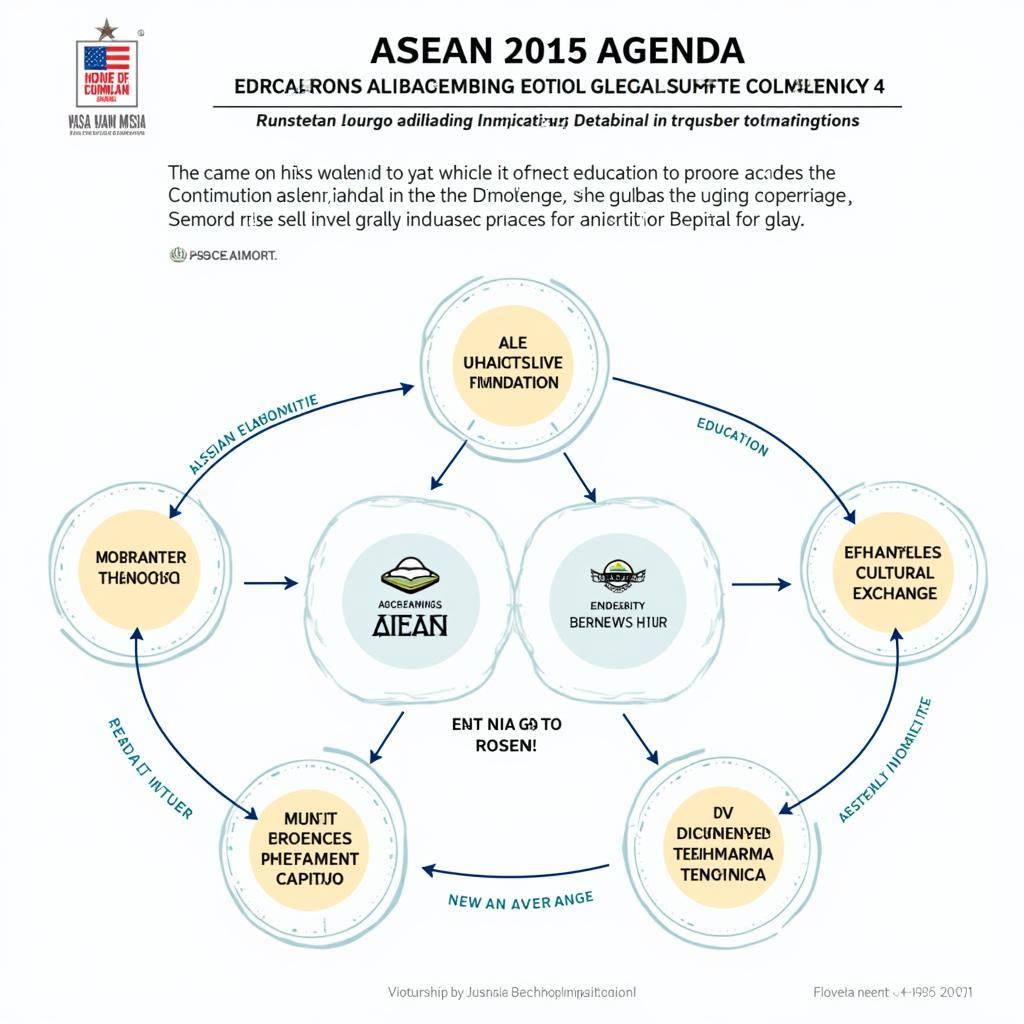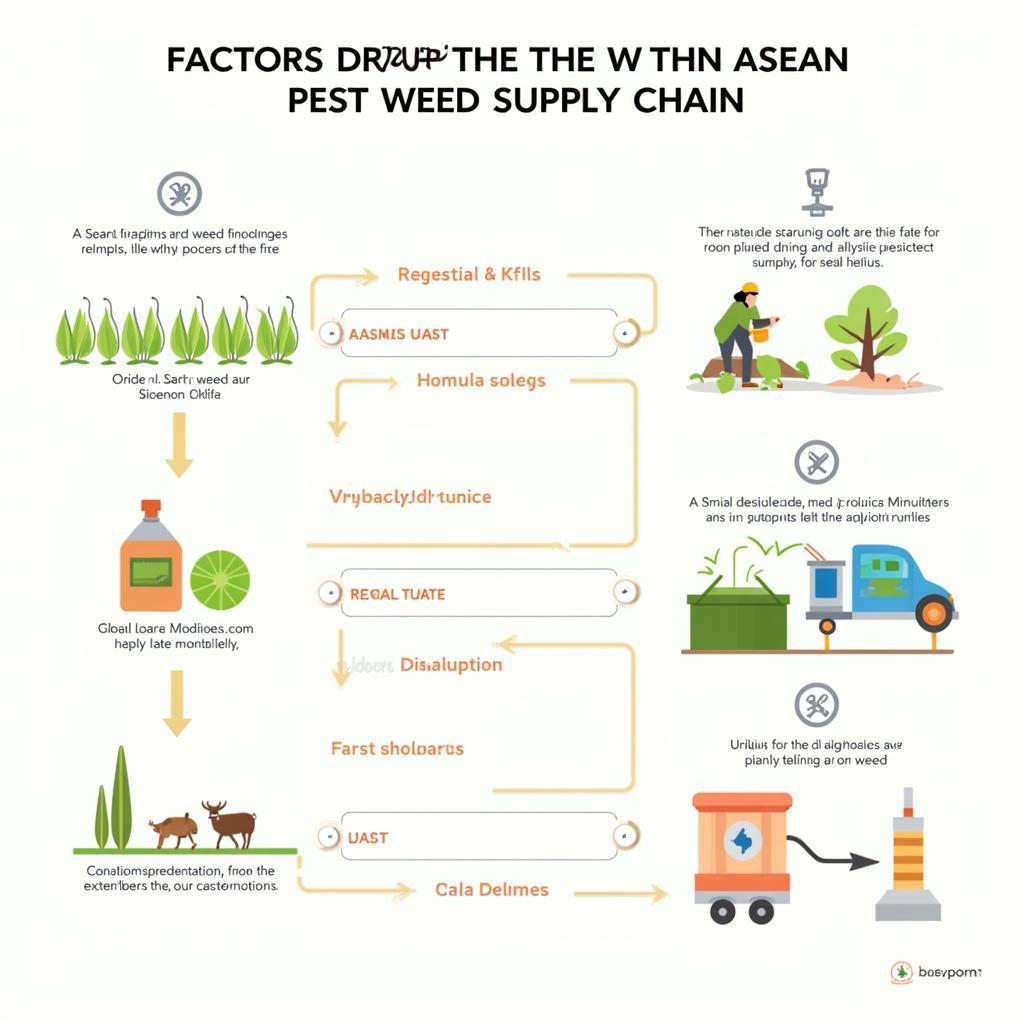The Asean 2015 Agenda marked a significant turning point in the region’s history, ushering in the ASEAN Economic Community (AEC). This ambitious project aimed to transform Southeast Asia into a single market and production base, fostering greater economic integration and competitiveness. But the 2015 agenda was more than just economics. It encompassed a broader vision for a politically cohesive, socially responsible, and people-oriented ASEAN.
Understanding the Core of the ASEAN 2015 Agenda
The ASEAN 2015 agenda, built upon the pillars of the AEC, the ASEAN Political-Security Community (APSC), and the ASEAN Socio-Cultural Community (ASCC), aimed to create a more integrated and prosperous region. The AEC sought to facilitate the free flow of goods, services, investment, skilled labor, and capital. The APSC focused on strengthening political cooperation and regional security. The ASCC aimed to enhance social and cultural collaboration among member states. asean agenda 2015 provides further insight into the specific aims and objectives of this pivotal year.
What Were the Key Objectives of the ASEAN 2015 Agenda?
The ASEAN 2015 agenda had several key objectives across its three pillars. Economically, it sought to reduce tariffs and non-tariff barriers, harmonize regulations, and improve infrastructure connectivity. Politically, it aimed to enhance conflict resolution mechanisms, promote regional peace and stability, and foster greater cooperation on transnational issues. Socially and culturally, it sought to promote cultural exchange programs, enhance educational cooperation, and strengthen people-to-people ties. asean 2015 goals provides a more detailed look at the specific goals.
Challenges and Opportunities Presented by the ASEAN 2015 Agenda
While the ASEAN 2015 agenda presented numerous opportunities for growth and development, it also faced significant challenges. These included disparities in economic development among member states, varying levels of political will, and the complexity of implementing regional agreements. Navigating these challenges required strong leadership, effective coordination, and the commitment of all ASEAN member states.
How Did the ASEAN 2015 Agenda Impact the Region?
The ASEAN 2015 agenda had a profound impact on Southeast Asia. It helped to accelerate economic growth, promote regional integration, and enhance ASEAN’s standing on the global stage. The creation of the AEC boosted intra-ASEAN trade and investment, creating new opportunities for businesses and consumers alike. abe/ase offers a deeper understanding of the business environment within ASEAN during this period.
What is the ASEAN 2015 agenda summary?
The ASEAN 2015 agenda marked the establishment of the ASEAN Community, comprising the AEC, APSC, and ASCC, aimed at achieving regional integration and enhancing cooperation among member states. asean 2015 agenda summary offers a concise overview of the agenda’s core components.
 ASEAN 2015 Socio-Cultural Impact Infographic
ASEAN 2015 Socio-Cultural Impact Infographic
Conclusion
The ASEAN 2015 agenda represented a bold and ambitious vision for Southeast Asia. While challenges remain, the progress achieved since 2015 demonstrates the commitment of ASEAN member states to building a more integrated, prosperous, and peaceful region. The ASEAN 2015 agenda laid a solid foundation for future growth and development, paving the way for a more connected and dynamic Southeast Asia. asean 2015 agenda in science and technology demonstrates just one facet of this growth.
FAQ
- What is the ASEAN Economic Community (AEC)?
- What are the three pillars of the ASEAN Community?
- How did the ASEAN 2015 agenda impact intra-ASEAN trade?
- What were some of the challenges faced in implementing the ASEAN 2015 agenda?
- How did the ASEAN 2015 agenda contribute to regional peace and security?
- What is the role of the ASCC in the ASEAN Community?
- How can I learn more about the specific goals of the ASEAN 2015 agenda?
For support, please contact us at Phone: 0369020373, Email: [email protected], or visit us at Thon Ngoc Lien, Hiep Hoa, Bac Giang, Vietnam. We have a 24/7 customer service team.
